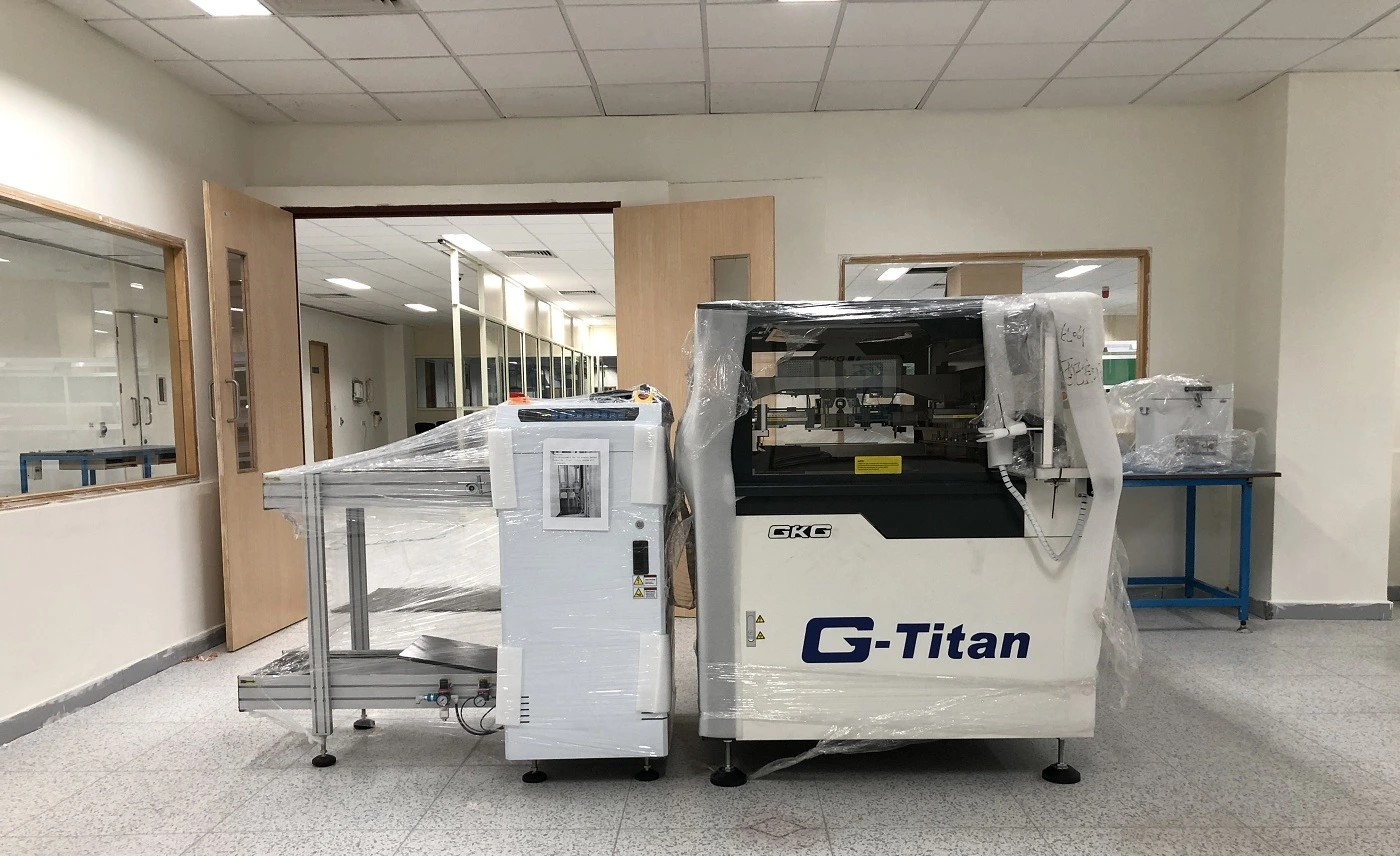
An SMT (Surface Mount Technology) line refers to a production line used in electronics manufacturing for the assembly of electronic components onto the surface of a printed circuit board (PCB). SMT is a widely adopted technology that has largely replaced through-hole technology for many electronic applications. Compared with traditional technology, Surface mount techology has the characteristics of high density, high reliability, low cost, and smaller size, which reuires a more efficient processing SMT line. According to the degree of automation, SMT production lines can be divided into automatic SMT lines and semi-automatic SMT lines. The main difference is whether the pick-n-place machine is fully automatic or semi-automatic, in which, semi-automatic requires manual printing or manual loading and unloading of PCB boards. Here are key aspects of an SMT line:
1. Well equipped I.Q.C. dept to insure incoming raw material quality.
2. A full-fledged Assembly Line.
3. ESD Safe Assembly Line.
4. Testing Jigs and Fixtures.
The primary function of an SMT line is to place surface-mount components onto a PCB. These components include resistors, capacitors, integrated circuits, diodes, and other semiconductor devices.
Automated pick-and-place machines are a central component of the SMT line. These machines use suction nozzles or other mechanisms to pick up individual components from reels or trays and accurately place them onto the designated positions on the PCB.
After the components are placed, the PCB goes through a soldering process to secure the components to the board. This can be done through reflow soldering, which involves melting solder to create a permanent connection.
SMT lines often include reflow ovens where the entire PCB is subjected to controlled heat to melt the solder and create secure electrical connections between the components and the board.
Before components are placed, solder paste is applied to the PCB using a stencil printing process. This paste acts as an adhesive for the components and is crucial for creating solder joints during the reflow process.
SMT lines incorporate various inspection and quality control measures to ensure that components are correctly placed and soldered. Automated optical inspection (AOI) and other testing methods are often employed.
he PCB typically moves along a conveyor system through various stages of the SMT line, from the initial solder paste application to the final inspection.
SMT lines are programmable to accommodate different PCB designs. Setup involves programming the pick-and-place machines, configuring the stencil printer, and adjusting the parameters for the reflow process.
SMT lines are designed for high-volume production, making them suitable for manufacturing electronic products in large quantities with high efficiency.
SMT lines can handle a wide range of component sizes and types, making them versatile for various electronic applications.
